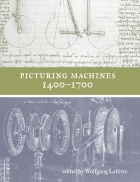




Mã tài liệu: 202984
Số trang: 355
Định dạng: pdf
Dung lượng file: 21,371 Kb
Chuyên mục: Khoa học công nghệ
The engineers and architects of the Renaissance are renowned not only for the universality of their genius and the audacity of their creations but also for their drawings. Leonardo da Vinci’s famous drawings of technical devices, although unparalleled in many respects, are just one instance of a practice of drawing in the realm of early modern engineering that came into being at the end of the Middle Ages and eventually addressed a broad audience through the Theatres of Machines in the last third of the sixteenth century. The new types and methods of graphic representation developed and used by Renaissance engineers have long attracted the attention of historians of art, architecture, science, and technology. Apart from their often fascinating aesthetic qualities, these drawings have been particularly appreciated as historical documents that testify to the development of technology, the spread of perspective, the psychological roots of technological creativity, and the beginnings of modern scientific attitudes.
As an unintentional consequence of this appreciation, however, little attention has focused on the significance that these drawings had, not for present historians, psychologists, and philosophers, but for the historical actors themselves, that is, for the mechanicians, engineers, and architects of the age. Why did they produce drawings? For whom and for what purposes? What were the prerequisites for this drawing practice, what were the contexts, and what were the consequences? In short, how did drawing shape the practice and the notions of early modern engineers? Those were the questions from which the idea of this volume arose. Among the many shared views of this volume’s authors (who also differ with respect to several aspects of its topic), there is the conviction that these questions can be successfully approached only by studies that dispense with large generalizations as regards the cultural, technological, intellectual, and aesthetical significance of early modern engineering drawings—generalizations that hampered rather than promoted an adequate recognition of them in the past. They believe firmly that what is needed instead is studies that actually go into the specific details and properties of these drawings—studies that, in addition, focus thoroughly on different aspects of
such properties, regardless of whether or not the pursuit of these different aspects leads to a new large synthesis.
The authors’ emphasis thus lay on analysis, fine-grained studies, and close attention to details, and all of them refrained from premature synthesis. The extent to which their studies nevertheless form a connected and consistent whole was surprising even for them. However, the authors being experts in this field of historical investigation, the chapters’ connectedness and coherence may be more obvious to them than to a broader readership. This introduction therefore cannot dispense with giving some indications of the context for these studies. The following outline of the historical setting of these drawings as well as of their crucial aspects constitutes neither shared starting points nor jointly achieved results of the authors, but the attempt of the editor to provide a sketchy topography in which each chapter’s choice of issues and perspectives can be located.
Những tài liệu gần giống với tài liệu bạn đang xem
Những tài liệu bạn đã xem
 Picturing Machines 1400 1700
The engineers and architects of the Renaissance are renowned not only for the universality of their genius and the audacity of their creations but also for their drawings. Leonardo da Vinci’s famous drawings of technical devices, although
pdf Đăng bởi
alihaha
Picturing Machines 1400 1700
The engineers and architects of the Renaissance are renowned not only for the universality of their genius and the audacity of their creations but also for their drawings. Leonardo da Vinci’s famous drawings of technical devices, although
pdf Đăng bởi
alihaha